The Thames East of London
Starting from the Tower of London and moving through the Docklands to Greenwich, the Thames is no longer the major shipping line it once was. Old warehouses are being converted into posh flats and new high rise office buildings are changing the face of the Docklands. These photographs were taken during a guided cruise from Tower Hill to Greenwich.
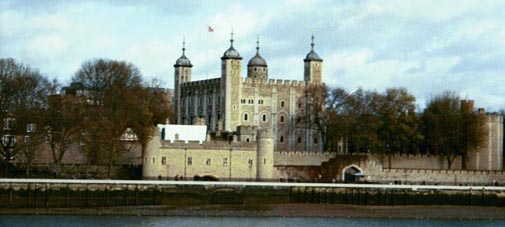
Traitor’s Gate
One entrance to the Tower of London, Traitor’s Gate accepted prisoners by barge. It is the arch just above the rail in the centre of the photo. The half-timbered house behind it is part of the string of houses where the Tower guards reside. To the right is the White Tower, the oldest section of the current complex.
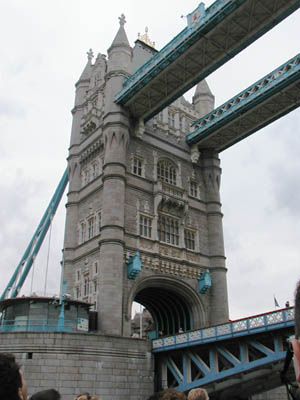
Tower Bridge
Often in the US incorrectly considered “London Bridge”, Tower Bridge is the most famous of the contemporary bridges across the Thames. The man who bought London Bridge thought he was buying Tower Bridge. The towers are extremely impressive: they contain the mechanism that raises the roadway so tall ships may pass.
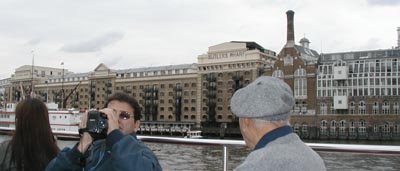
Butler’s Wharf
A set of Victorian warehouses originally owned by a man named Butler, Butler’s Wharf today is a very posh neighbourhood of flats, shops, and restaurants. Exteriors for Bridget Jones’s Diary were filmed here.
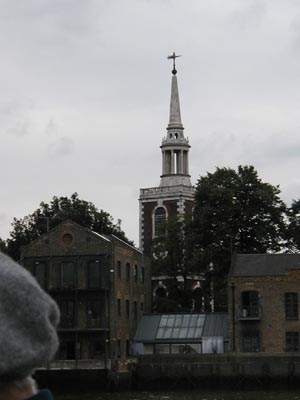
St Mary’s Rotherhithe
Beyond Tower Bridge is the region known as the Docklands. In the nineteenth century and for much of the twentieth, this was the ultimate pit of London. The East End was bad; the Docklands was worse due to the water. In earlier years, however, the towns along the Thames produced a strong seafaring tradition. St Mary’s Rotherhithe is where Christopher Jones, captain of the Mayflower is buried.
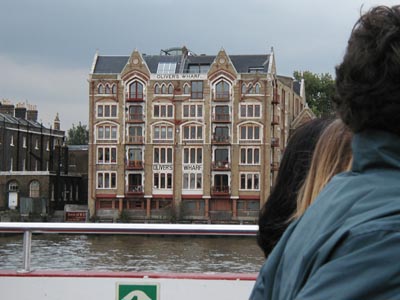
Oliver’s Wharf
Once a sugar warehouse in Wapping, Oliver’s Wharf, like Butler’s Wharf, has been converted for residential use.
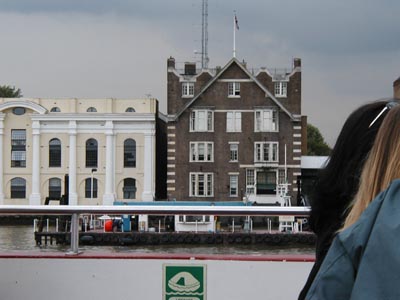
River Police Headquarters
A police station has stood on this spot since the late 18th century, when the Marine Police Force was instituted to prevent theft from the ships in harbour. This building looks to me like a Victorian replacement in Georgian style: the windows do not seem quite right with the overall style of the building.
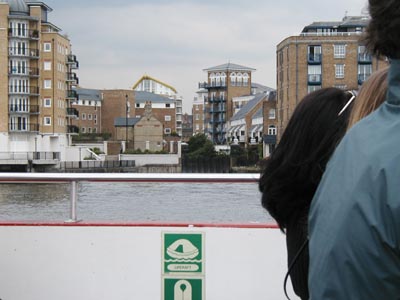
Limehouse
I think this is the entry to Limehouse Basin. Limehouse is the terminus of Regent’s Canal.
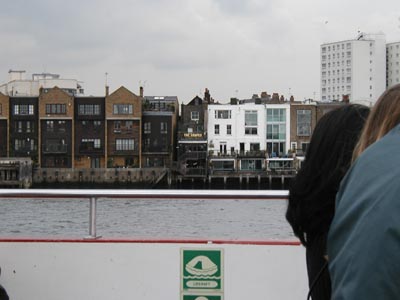
The Grapes, Limehouse
The pub, sandwiched among more modern architecture, was frequented by Charles Dickens and described in Our Mutual Friend under the name “The Six Jolly Fellowship Porters”. It’s narrow construction and unique location on the Thames make it easily identifiable in Dickens’ novel.
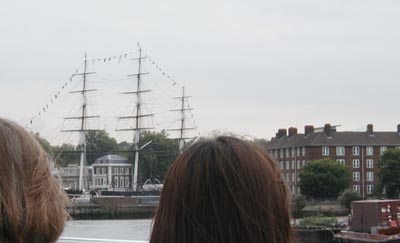
Cutty Sark
The Cutty Sark is an old schooner originally built for the tea trade. It spent most of its life running wool from Australia as steamships took over the tea runs. It is in drydock and functions as a museum, with a collection of figureheads in the hold.
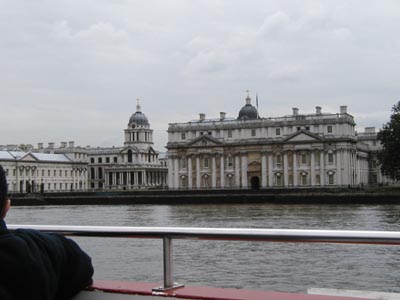
Royal Naval College (Trinity College of Music)
The west wing of the former Royal Naval College, now used by Trinity College of Music.
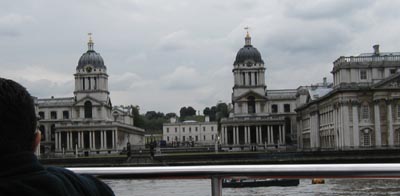
Royal Naval College, with Queen’s House in the distance
When the RNC was built in the 1700s, originally as the Greenwich Hospital, it had to be built in two pieces so that the Queen’s House, used at the time by the royal family, would keep its river view.
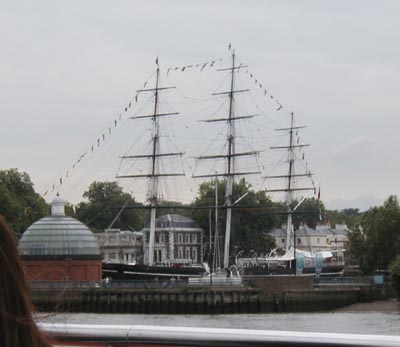
Cutty Sark and Greenwich Foot Tunnel
And back around to the Cutty Sark. The domed structure is one end of the Greenwich Foot Tunnel, constructed to allow Millwall docks workers from South London to walk to work, thereby avoided delays caused by river traffic and ferries.,